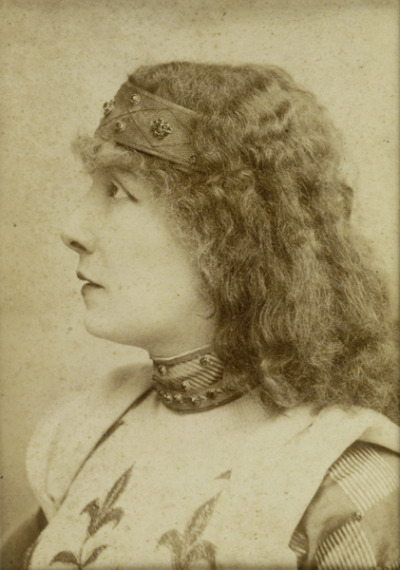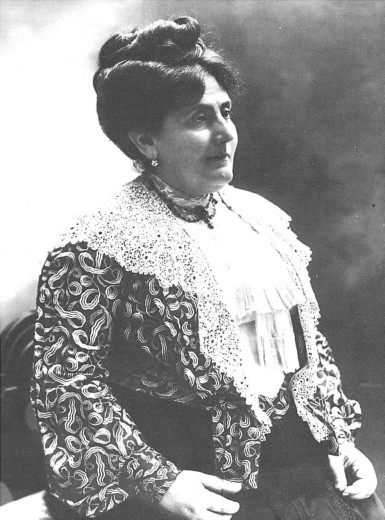紀念資深樂評家曹永坤先生
我是在曹老師的談話中認識Nadar的, Nadar是攝影界的傳奇人物, 當時許多名人都在他的鏡頭下呈最美的一面, 書中還比較了修片前後的效果.... 1858年Nadar 爸爸Felix 經多次失敗後,成功坐著熱汽球完成巴黎高空照片。名伶Sarah Bernhardt亦在同行之列。

工作室Nadar studio on the Rue d'Anjou
以下是我網上找到的"The World of Proust, as seen by Paul Nadar"書中照片:
 封面
封面
10幾歲的Proust...也是本書封面


Proust在20幾歲遇到的作曲家Reynaldo Hahn 1875-1947, 傳說中愛人

Claude Debussy, 德布西是書中的凡德伊vinteuil原型之一(Franck亦是)

Genevieve Bizet-Straus 比才遺孀, 史特勞斯夫人, 帶Proust初步進入上流社會, 也是書中原型

猶太人Hass是書中Swann原型
^^^^^^^^^^^^^^^^^^^^^^^^^^^^^^^^^^^^^^
下面四張是爸爸Felix Nadar照的Sarah Bernhardt




^^^^^^^^^^^^^^^^^^^^^^^^^^^^^^^^^^^^^^^^^^
下面是 Paul Nadar照的Sarah Bernhardt


 這是兒子Paul Nadar照的
這是兒子Paul Nadar照的


Sarah Bernhardt書中名伶Le Berma原型, 書中便是說到她演的拉辛 Racine's "Phaedra"
%%%%%%%%%%%%%%%%%%%%%%%%

Comtesse Greffulhe,書中公爵夫人的原型
普媽媽
Biography:
Paul Nadar became the manager of his father Fleix Nadar's studio in Paris in 1874. Despite their troubled relationship, the two collaborated in 1886 on what is thought to be the "first photo-interview" on the chemist and color theorist Michel-Eugene Chevreul.
Nadar began photographing from a hot-air balloon and showedhis work at the Societe Francaise de la Photographie. He also experimented with artificial lightings and patented a projection system for animating still pictures. In 1893, Nadar became Kodak representative in France. 
Sitters would henceforth wear fancy clothing, hold props, and pose before decorative or contextual backgrounds. Marcel Proust at the tender age of 16 looks out at the camera with his extraordinary eyes, a large white collar and bow-tied cravat around his neck. Emile Zola peers calmly through his pince-nez, hair combed back, dressed in a heavy fur-trimmed coat over a close-fitting vest. His long watch chain drapes conspicuously and one hand is tucked in a trouser pocket. Comte Robert de Montesquiou strikes a pose with a walking stick and expensive top hat. Six portraits of "the Voice of Gold" Sarah Bernhardt, onstage and off, are exquisitely styled to highlight her languid yet arresting presence. Claude Monet took off his hat, trimmed his hair, and wore a dark suit for his portrait. Even in profile his eyes twinkle. Paul Nadar kept the studio going past the turn of the century, and a soft focus portrait of Jean Cocteau from 1930 (back to the simple background) was perhaps the last one he did that was related to Proust's circle. Proust died in 1922, Nadar in 1939.
Paul Nadar's widow entrusted the French government with the entire archive of the Nadar studio in 1950. It has taken since then to catalogue one-fifth of the 400,000 glass plates and vintage prints. "The World of Proust as seen by Paul Nadar" is actually based on a 1991 exhibition that took place in Paris at the Hotel de Sully, near the Place des Vosges.
Anne-Marie Bernard, credited as the editor of The World of Proust, is an authority on the Nadars' oeuvre, and works within the Photographic Archives Department of the French Ministry of Culture. Bernard sifted the archives to shake out Proust's characters beginning with the Narrator himself. Each portrait is given a caption stating who the sitter was in real life and what relationship he or she bore to which Proust character(s). Swann is based on one Charles Haas, a dandy whose fame did not exceed his own lifetime. The Princess and Duchess de Guermantes are composites of several women, aristocratic and not so. Bergotte is and is not based on Anatole France, a writer who greatly influenced the young Proust. Monet inspired Elstir for the most part, and Gabriele Faure's music probably served as a model for the Vinteuil sonata that figures so prominently. Chapters are organized into broad cateories entitled "Family Intimates;" "Society Life;" "Literature and the Arts;" "The Ballroom & The Stage;" and "Residences."
The book offers a number of "full frame" or uncropped reproductions that reveal the scene in front of the camera with all of its staging: assistants hike up a curtain; flimsy painted flats tilt; sitters hold in their laps reflective discs to increase the lighting contrast on their features ever so slightly. No apologies are made for wear and tear on the negatives, either. Holes, cracks, staining and other imperfections occasionally appear, which suggests that some new prints were made from existing glass negatives. In his day, Paul Nadar excelled in the controversial practice of retouching. A number of "before" as well as "after" prints were preserved in the archive and have been reproduced in the book to illustrate this technique. The technicalities of Paul Nadar's photographic studio will certainly exceed most Proust readers' interest, but in terms of period detail they're fascinating and will amuse any artist interested in portraiture, its history, and its artifice. Bernard wrote two introductory essays discussing the art of photographic portraiture and retouching. In the back of the book there are notes for the captions, biographical data, a bibliography, and an index. In terms of organization, thoroughness, and clarity, it has a feeling of great completeness.
Nevertheless true Proustians may find this book bittersweet. Unveiling Proust's characters is both a supreme gratification and a desperate compromise, like telling a secret - a brief sensation of triumph followed by the sadness that comes with betraying a friend. But of all friends, he might have understood this little crime against art. The delight of anticipation (a person he wished to meet, a place he wished to visit) followed by the terrible disappointment of reality was a subject he wrote about at length in the novel. Imagination is continually pitted against the risk of knowing. It's no surprise, really, that the Narrator would instigate in his readers a desire to know Proust the author and his characters. That desire is at once gratified and destroyed by "The World of Proust as seen by Paul Nadar."

本文於 修改第 10 次